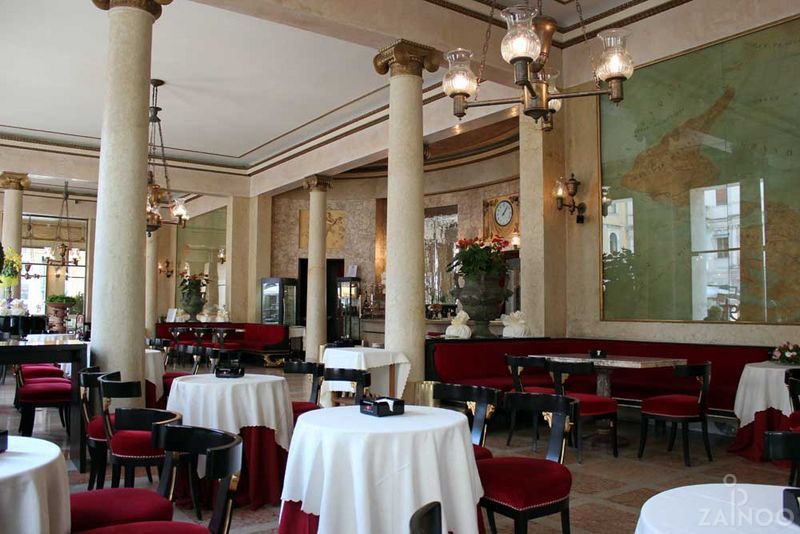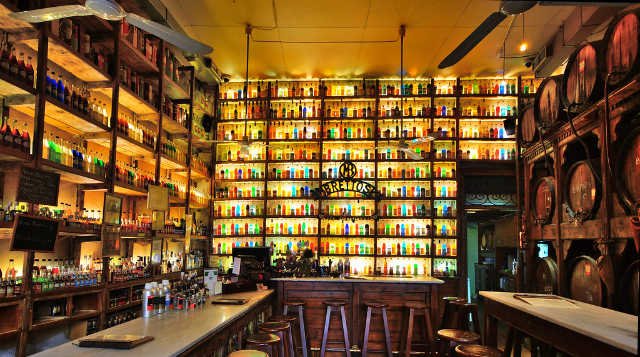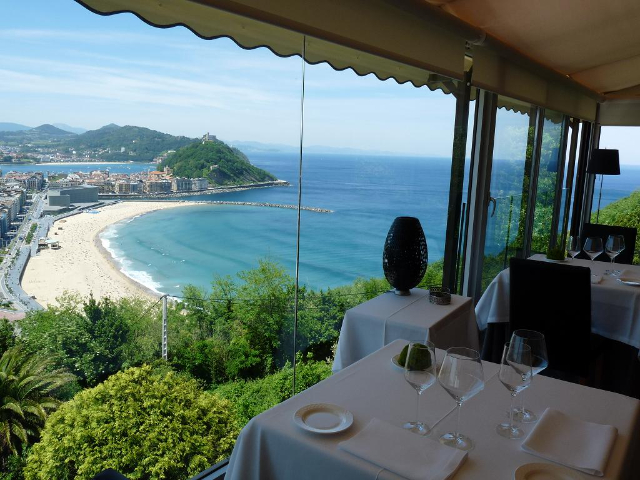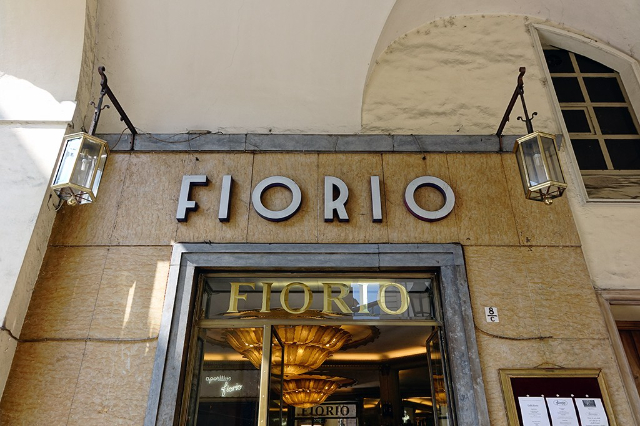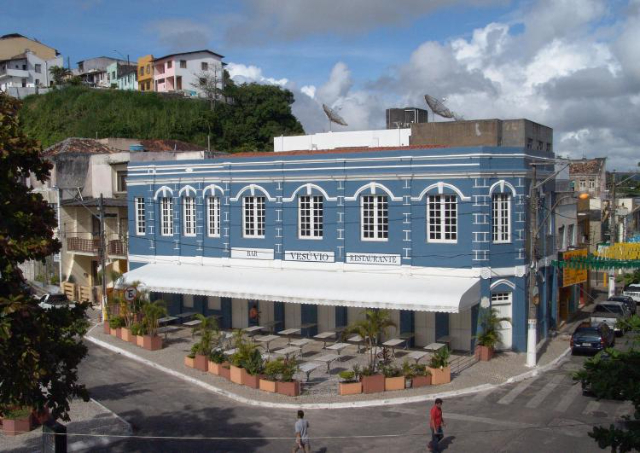Born when the bourgeoisie, already well established in Europe, was just taking its first steps and thus needed those places such as cafes, where various circles could gather openly, as opposed to the private dimension of aristocratic salons. Absolute protagonist of Paduan social life at least until the mid-1800s.
In 1816 Antonio Pedrocchi, the son of a coffee maker from Bergamo, commissioned the well-known Venetian architect Giuseppe Jappelli to expand the small café he had inherited from his father.
The new establishment, which was to be the "most beautiful café on earth," was inaugurated in 1831 and then joined in 1836 by the Pedrocchino, an elegant neo-Gothic building reserved for the pastry shop.
The Café from its earliest years became known as "the café without doors," both because until 1916 it was open day and night and because of the welcome dictated precisely by its structure: the open and, at the time, unglazed arcade was a kind of "passage" connected to the city.
Prices were not expensive, although the place was already very luxurious for those times, and with a lira you could eat.
The owner, Antonio Pedrocchi, the first by the way who lit his Café with gas, had a very unique way of treating his clientele: in fact, anyone could sit at the tables even without ordering and linger to read the books and newspapers, such as "Il Caffè Pedrocchi" (the first of six newspapers named after the Café), provided by the establishment.
Women were offered flowers as gifts and, in case of sudden rain, customers were lent an umbrella.
The building was adapted to a triangular-shaped area in the heart of the city (hence the café’s piano-shaped floor plan).
Its splendid architecture, which mixes neoclassical and Venetian Gothic styles, with exotic Egyptian and chinoiserie references, much in vogue in the 19th century, reflects the romantic climate of the time and the flair of architect Jappelli.
The northern facade of the Café features two porticoes with Doric columns, preceded by four lions sculpted by Roman sculptor Giuseppe Petrelli.
In the small square in front of the Café, Jappelli, at the request of Antonio Pedrocchi, had planned a fountain with a statue of Hebe by Canova, a project that was, however, never realized.
A steep staircase on the right loggia leads to the upper floor, or Piano Nobile.
The first floor, intended as a café, is characterized by a succession of rooms named according to the color of the tapestry (White Room, Red Room, Yellow Room, Green Room).
Entering the Café, on the left we encounter the Green Room and on the right the Yellow Room or the Stock Exchange, so called because merchants met there to fix the prices of certain goods.
Immediately after the Green Room we encounter the spacious Red Room, tripartite by Ionic columns on an Egyptian base with the counter adorned with bronze decorations, and immediately after the White Room, which opens onto 8th February Street and the University, much noted for the sign of the Austrian bullet fired during the ’48 uprisings.
The upper floor, once the home of a Citizens’ Circle, includes a series of functional spaces decorated in historic styles of the past.
Thus the Etruscan Hall, the Greek Hall in octagonal form, the Round or Roman Hall, the Renaissance Hall, the Herculaneum or Pompeian Hall, the Egyptian Hall, and the Napoleonic Hall, dedicated to Gioacchino Rossini, and for this reason also called Rossini Hall, follow one another, a true theater where the stuccoes, curtains, and chandeliers seem to take us back in time to the middle of the 19th century.
In the past, each room had a specific function, for example, the Etruscan Room was used as a checkroom, the Greek Room for games, the Rossini Room as a ballroom, and the Egyptian Room for secret meetings.
The various rooms are decorated with subjects inherent to the style of each room: Roman views, in the Roman Room, the fresco "Diogenes and Plato’s Cock" in the Greek Room, statues, sphinxes, cinerary urns and the starry ceiling in the Egyptian Room.
It was also the scene of the Risorgimento student uprisings of 1848 against the Austrian ruler, as evidenced by the memorial plaques on the wall of the White Room, and a hangout for writers and artists such as Nievo, Fusinato, Stendhal who even extolled the wonders of Pedrocchian zabaglione, D’Annunzio, Eleonora Duse and the futurist Marinetti.
Owned by the City of Padua since 1891, the Café houses among its prestigious rooms the Pedrocchi Galleries and the Museum of the Risorgimento
